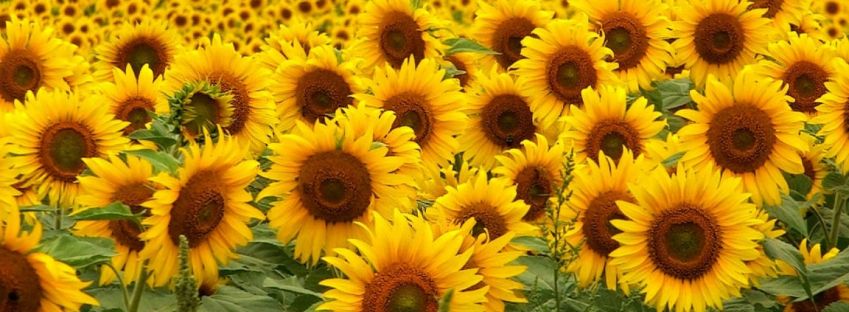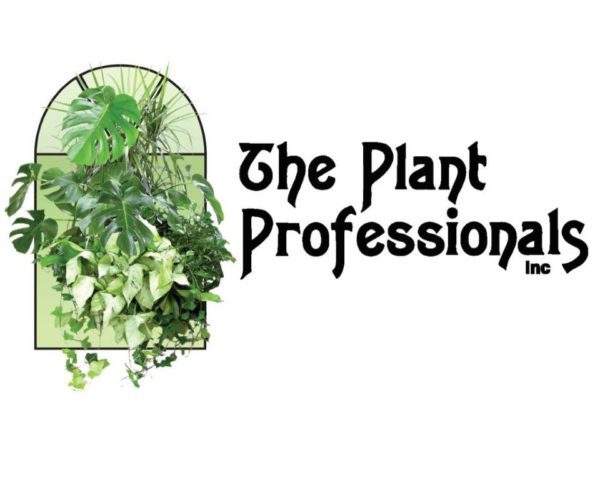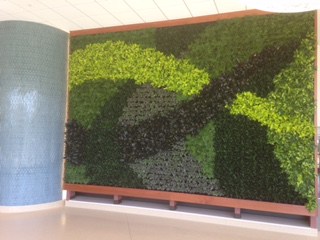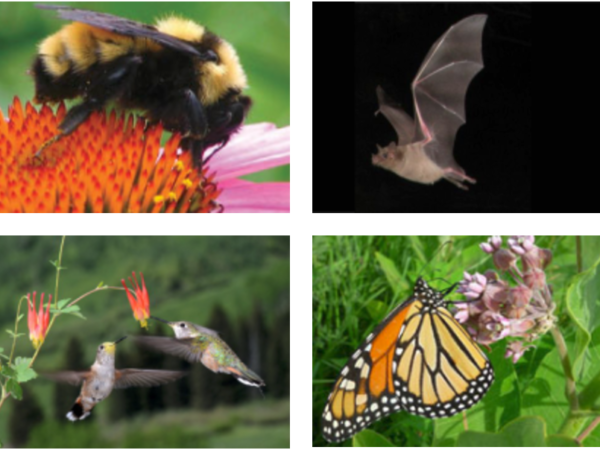What’s Budding

What’s Budding

40 Years of Fun
I remember the beginning of my employment here – being hired to care for tropical plants two days a week. I was excited to use my freshly-minted Horticulture degree. I had interviewed the original owner a few weeks before, as research for a paper I was writing to complete an independent study class. I was so taken by her enthusiasm, her professionalism and her candor. She was blazing a trail in a relatively new industry. She was working with plants indoors, year round, and she did not have to plow snow!
The first few years were a blur. I was learning so much, so fast. I mastered drilling holes for ceiling hooks because everyone was hanging spider plants and grape ivy in wicker baskets and macramé back then. I was excited to learn about a variety of plants as I worked. I quickly learned how to spot and treat mealy bug, scale and mites, as so many plants arrived from Florida with little insect friends in tow. It was the wild west of pest control then.
In the early 1980s…

On the Green Side

Green Walls
As Green Walls become more commonly used and visible, the public’s reaction has been quite gratifying. Our first major project was the Gathering Place wall in Sparrow Hospital in 2016. At 14’ tall and over 20’ wide, the visual impact is undeniable. At this height, a scissor lift for access is a requirement, and grooming and pruning is done every 14 days. Our focus is on vibrant color and plant health.
This installation has built-in irrigation and drainage, with a system allowing us to inject fertilizer through the watering system. Our technicians must constantly evaluate plant growth and fullness. With over 1,200 plants in the design, there is a protocol for rotating fresh plants in, while maintaining design integrity. The 4” pot size allows a great deal of design flexibility when planning the initial installation of living art, including the use of curves. The small plants are tilted out to face the observer, giving an immediate “wow” factor.
A wonderful system that can be used in Michigan indoors or out is called Live Wall. Based in Spring Lake, the Live Wall team has designed a high-quality mounting system, using decorative bins and inserts that allow the plants to be rooted in pairs in an insert. This makes plant changes simple and quick. The plants display upright, and vines then grow over to spill down.
Because the bins allow a 6” plant to root into a larger soil mass, plants live longer and become larger in this system, though pruning does become a near constant activity.
We have plants under our care in this system at Mill Steel in Grand Rapids, and Klavon’s Pizzeria and Pub in Mason, and we installed an exterior system for the state of Michigan for Constitution Hall several years ago. Our Live Roof on our grow pot exchange facility is a product of this same organization.
Another versatile system which we have used multiple times is the Next Gen system by the ASI Group. This relatively inexpensive system is modular, using backer grids and trays, and the plants remain in 6” grow-pots in this application. Small portrait size displays for offices and lobbies are easily designed in this system.
There are also systems where cuttings are rooted into batting, systems of wheeled room dividers, and even systems designed for growing food or herbs on patios. Vertical plantings are experiencing an explosion of interest and innovation.
For each system, there are three keys for success. Supplemental lighting mounted above the wall system, either from the wall or ideally from the ceiling, insures adequate light from a source directly above the plants. Plants must be positioned at a height safely reached by an 8’ ladder, or a scissor lift must be available for service every 14 days. Operators must be safety certified and aware of their surroundings at all times. The third key is a commitment to professional care. Even with an irrigation system, insects and diseases must be scouted and treated, fertilization planned and constant pruning maintained.
We are currently working on four projects where we have designed and specified a wall, and the proposal has been accepted. We have two more designs in process where a living green wall will be the focal point of a new building lobby or waiting area.
Pricing generally ranges from $150 to $250 per square foot, installed and planted. Is there a green wall in your future plans? We can visit your existing building or look at the plans for your new space, and advise on what systems you should consider for your application. We would love to assist you in greening your vertical space.
Digging In

Pollinator Gardens
Pollinators play a crucial role in flowering plant production and the production of most fruit and vegetables. Hummingbirds, bats, bees, beetles, butterflies, and flies carry pollen from one plant to another while gathering nectar. We may not notice these pollinators, yet without them, we would have far fewer berries, seeds, fruits, nuts, and vegetables to enjoy. This includes chocolate and coffee!
According to the U.S. Fish and Wildlife Service, there is increasing evidence that many pollinators are in declining. However, there are some simple things that can be done to encourage pollinator diversity and abundance.
Lure pollinators to your garden, deck or patio with feeding stations, houses, bird baths or ponds, and plants that provide nectar and color. A muddy puddle attracts flocks of butterflies with salt, nutrients and water. Trees can offer nectar in the spring, a nesting place in the summer, and berries or nuts in the fall and winter.
Butterflies prefer flowers with clustered blooms that face upwards for a landing pad, such as coneflower, asters, and zinnia. Hummingbirds like to sip from tubular, bell, and funnel-shaped flowers, such as coral bells, honeysuckle, trumpet vine, and penstemon. Planting a range of plant types will serve varied species within the garden throughout the year.
Provide foliage cover, logs, brush and rock piles, preferably in shaded areas, as sanctuary. The structures shelter pollinators from the elements and predators, and serve as breeding grounds to rear young. Artificial nesting boxes, such as mason bee houses, bat boxes, and honey bee hives, can help increase the population of pollinators.
Use more native plants in the garden. Though many exotic plants can be adapted to local climates, they may not be as valuable in supporting beneficial insects. For example, while hybridized double flowers may look very beautiful, they provide little nectar to butterflies and bees. Native plants support four times as much insect biomass compared to non-native plants.
Limit the use of pesticides. If a pesticide is necessary, apply carefully and selectively. Do not use on open blossoms, or when pollinators are present.
Get the whole family involved! Creating a wildlife habitat for pollinators will be a lot more fun if you involve everyone. Discuss why you want to do this and what it means. A great program that is available is the National Pollinator Garden Network, Million Pollinator Garden Challenge. While they have surpassed a million registered gardens, pollinators still need you! Anyone with any size garden can join. Click on the link for more information.
http://millionpollinatorgardens.org/ 
The Buzz

Tariffs
Most professionals in design, agriculture and retail have been carefully monitoring the situation. Virtually all of our holiday decorating products, from trees and wreaths to lights and decorations come from mainland China. Many of the decorative container lines we carry are made there, as are some components of green wall systems. We expect beginning September 1st to begin seeing price increases due to these tariffs. While we will not add costs to items already in our stock, and we will not mark -up past our actual increase in cost, there may be some additional costs on new projects due to these fees, if our suppliers pass the costs on to us. Since all our plants are grown in the United States, there will be no impact there, thankfully.
Copyright © The Plant Professionals